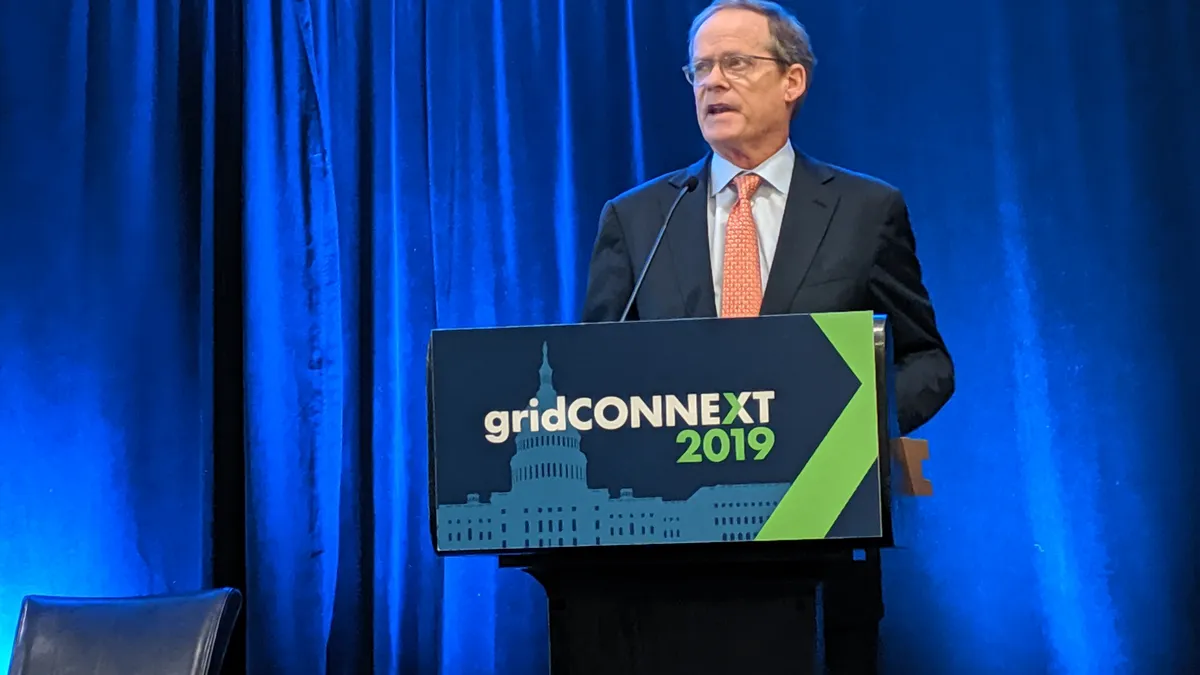With 2019 drawing to a close, the power sector has seen a lot of changes, but the key risks are very familiar, according to a former chief risk officer at the Department of Energy.
John MacWilliams, an associate deputy secretary during the Obama administration, has watched closely to see how the risks faced by the new administration would develop and be addressed. In his position at DOE, he was steeped in security matters, from nuclear to cyber.
"The agency is doing all the wonderful things that [they've done] in the past, to energy efficiency and others in the national security area," he told a crowd at the GridConnext conference in Washington, DC, during a Wednesday keynote address.
The Trump administration has "increase[d] the awareness of cybersecurity and other certain national security issues that we are working on," MacWilliams, currently a senior fellow at Columbia University's Center on Global Energy Policy, said.
1. Cyber
The specter of cyberattacks has increased in recent years, just as grid vulnerabilities have grown with an increasingly automated power system.
"The current administration, I will say to their credit, has continued outreach to the energy sector, utility, etc., that is helping to share threat information," MacWilliams said.
The Trump administration also "declassified a lot of information" about cyberattacks on the power grid.
"A lot of what you've seen in the last year, coming out of the Department of Homeland Security and other places, really was fairly closely held just a couple of years ago, but I think it really is important to understand," he said.
The DOE has known for some time that the Russian government is targeting the U.S., specifically industrial control systems, but MacWilliams said he is glad to see this information available to the public. The Idaho National Lab is working on a variety of systems to protect the grid from destructive cyberattacks.
2. Physical threats
MacWilliams said physical threats on the grid with conventional weapons "often are overshadowed" by cyber threats, although attacks on substations and other grid assets have been successfully carried out.
"The large part of our critical energy infrastructure," including associated infrastructure such as chemical facilities and refineries, "are really quite soft targets."
"The one [physical target] that's gotten the most attention at least over the last year or so when we were in government [are] the high voltage transformers," he said.
In 2014, Sandia National Labs reported on threats to the grid and said simultaneous or multiple attacks of high voltage transformers "could have severe implications for reliable electric service over a large geographic area."
Transformers are very expensive assets and take a long time to build, with lead times of 24 months of construction sometimes, MacWilliams said.
3. Aging grid
GridCONNEXT discussions ranged from the need to upgrade distribution infrastructure to broader grid modernization, and MacWilliams' comments touched on the gaps in energy infrastructure.
Several other stakeholders have referenced transmission distribution construction being more than 50 years old in many parts of the country, and many power plants are well over 30 years old, MacWilliams said.
"Given our current rate-based recover model and utility sector, I think there really is risk that we won't invest sufficient capital fast enough in the right way to create a modern grid that will enable this next generation of consumer-oriented, technology-based generators," he said.
4. Climate change
"Despite the current administration's unwillingness to accept the facts and really continue to provide global leadership in the area," he said, this remains a key "existential threat to the planet."
California has experienced a severe amount of damage from increasing fire risks, but extreme weather has plagued a lot of countries, such as Australia, MacWilliams said.
However, climate change has "more specific effects that are less well understood." In the near term, he said drought and high temperatures have reduced wind and solar outputs, "so we're already seeing the effects of this on our infrastructure and massive investment needs to be made."
5. Squirrels
During his last year at DOE, squirrels were estimated to have caused 3,456 outages in the U.S.
Tree branches received an honorable mention, MacWilliams joked. But based on the localized damage that often happens from squirrels and branches, clearing activities remain very important.
The American Public Power Association, he noted, said squirrels cause thousands of power outages annually as reported by its municipal utility members.
"You're thinking about risks and there are a lot of exotic risks," MacWilliams said. However, utilities must continually consider the distribution curve to see where money should be allocated, which will show "day to day risks are very important."























